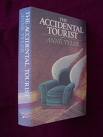Jerome Bump
The Family Dynamics of the Reception of Art
Abstract. Family systems theory, especially that originating in research on chemical dependence, can generate a new reader-centered criticism that reveals the unconscious interaction of readers, including literary critics, with the family dynamics embedded in the text. This approach seems particularly valuable for realistic family fiction of the last two centuries, especially Victorian novels, the fiction of D. H. Lawrence, and contempoarary American novels. A survey of American fiction by Allison, Banks, Brown, Chute, Conroy, Erdrich, Ferro, Furman, Gibbons, Garcia, Heller, Hinojosa, Humphreys, Islas, Kingston, Larsen, Leavitt, McMillan, Morrison, Oates, Plante, Russo, Smiley, Smith, Tyler, Updike, and Winthrop suggests the need to revise Freudfs gfamily romanceh to focus on the reader as well as the protagonist as an gorphanh in search of a functional family. The congruence of family systems theory and Emily Brontefs Wuthering Heights, Anne Brontefs The Tenant of Wildfell Hall, Hardyfs The Mayor of Casterbridge, Dickensfs Great Expectations, Lawrencefs Sons and Lovers, and Anne Tylerfs The Accidental Tourist and Dinner at the Homesick Restaurant is demonstrated.
In our verbal accounts of how we read literature, see a work of art, or hear music, usually the first thing that happens is that the gweh disappears and is replaced by an gIh: the focus shifts to the individual apprehending the work of art in isolation. This shift occurs despite our increasing sense of language as a social act and the postmodern critique of the concept of the autonomous self. Bakhtin's concept of heteroglossia, for example, implies a polyphonic self, a dialogue with internalized others that complicates the concept of the single, unitary response traditionally ascribed to the one who apprehends the work of art. However, Derrida's definition of the self as merely a position in language and Foucault's sense of the self as only an effect of discourse have obscured the fact that the self is not only fictive, it is also social, located in particular relationships as well as textual conventions (Flax 232-3). Ironically, if even postmodernist arguments must assume some notion of an actual self, it tends to be, as in Foucault's case, a "socially isolated and individualistic view of the self" which "precludes the possibility of enduring attachments or responsibilities to another," and is thus incompatible with "the care of children or with participation in a political community" (Flax 217, 231).
This postmodernist blind spot about particular relationships pervades academic psychoanalysis because the chief authorities, Freud and Lacan, usually assume a relatively isolated individual in conflict with frustrating Others. Because of this orientation to individual consciousness Otto Rank conceded that in the twentieth century "psychology is the individual ideology par excellence" (389): social psychology, rarely integrated with literary study, remains preoccupied with society as a whole rather than families and small groups. In Freud's early theories, if the individual could maintain his psychic equilibrium by himself, apparently he would have little need for other people; indeed Freud suggests that as civilization develops, family ties and emotions must be sacrificed (Civilization 50-1). Admittedly, Freud's theory of the Oedipus complex does acknowledge the importance of some familial interaction (though it minimizes that of the preoedipal and of the feminine generally), and his later theories do acknowledge the lengthy period of dependence of children and a role for culture and relationships in the superego and the id (Ego 25, 19, 38). Inspired by Levi-Strauss, Lacan also concedes the importance of elementary kinship structures.
However, within psychoanalysis it is primarily object relations theorists who acknowledge the importance of the family and social relations. They acknowledge that in the first six months of human life "the unit is not the individual, the unit is an environmental-individual set-up. The center of gravity does not start off in the individual" but in the preoedipal relationship of mother and child (Winnicott 99). Moreover, with the impact of general systems theory, quantum mechanics, and field and chaos theories, there has been a transition from the drive model to relational-model theories in other versions of psychoanalysis as well. As Barbara Schapiro observed in Literature and the Relational Self,
the basic unit of study is not the individual as a separate entity ... but an interactional fieldf... the psyche cannot be understood as a discrete, autonomous structure... eThe person is comprehended only within the tapestry of relationships, past and present . . . This relational model in the social and natural sciences has implications for the critical models and frameworks that we bring to the study of literature and the arts. With its focus on dynamic, interactive patterns and relationships, the relational paradigm can redirect our attention to the interconnections, and not just the disruptions, in our cultural and literary analysis. While dismissing essentialist structures and absolute categories or truths, the relational model nevertheless highlights significant orders of connection and relationship; it expands the possibilities for meaning in our understanding of human experience and in the creative reconstruction of that experience in art and literature. (Schapiro 2, 5).
In response to feminist scholarship, psychoanalysts of art, traditionally preoccupied with Oedipal dynamics, are now beginning to include the preoedipal relationships of child and mother and thus expand the familial interaction to include both parents. Nevertheless, even recent psychoanalyses of art rarely recognize the importance of the relationships of all family members and that of the family as a unit, much less repetition between generations. When they do, as at times in Schapirofs book, the focus remains on the individual rather than the group and thus is still more intrapsychic rather than truly interpsychic in scope. This is surprising because even though scholars like Schapiro cite general systems theory, they seem unaware that in the 1950's general systems theory generated family systems theory (Foley 39-45, Bradshaw 27) which identified the patterns of interactions and feedback loops in families and has led to many new, successful modes of treatment for anorexia, addiction, depression, dependence, and many other dysfunctions.
A book of literary criticism has finally been devoted to this field: Paula Marantz Cohen's The Daughter's Dilemma: Family Process and the Nineteenth-Century Domestic Novel (1991). Cohen places Richardson's Clarissa, Austen's Mansfield Park, Emily Bronte's Wuthering Heights, Eliot's The Mill on the Floss and James's The Awkward Age in the context of the family system theory that emerged from schizophrenia research, represented by Kerr and Bowen. Believing that the "cross-sexual, cross-generational relationships of father and daughter functioned as the core of the nuclear family" (22), Cohen focuses on the sick daughter's role in the family as the bearer of the family's symptoms. She traces the ways in which psychosomatic illness performs a regulating function, maintaining the closed family system, and on the relationship between "the novel's thematic drive to establish a closed family system" and "its formal drive to closure" (29).
While family systems theory is but one of three contemporary psychologies John V. Knapp relates to literature in Striking at the Joints: Contemporary Psychology and Literary Criticism (1996), he adds many dimensions to the approach pioneered by Cohen. He presents thorough, convincing defenses of interdisciplinary literary scholarship, especially integration of contemporary psychology and literary criticism, and of mimetic or grealistich literary characterization in the age of postmodernism. He shows us how to reconstruct ga fictional familyfs system and its emotional lifeh (61) in terms of the gmimesish discussed by Tallis (In , 69), Phelan (50), Graff, Hochman and Wachs. He convinces us that we are ginhabitants of a world not entirely or primarily constituted out of parts of speechh (Tallis, Not 63), a world in which language is not self-sufficient but embedded in society and history, especially the history of individual families (6).
Moreover, he brings to literary study the family systems theory that informs the practices of the thousands of family and marriage therapists (who greatly outnumber practicing psychoanalysts). He demonstrates the relevance of this widely effective contemporary psychology to Lawrencefs Sons and Lovers and Rothfs Call It Sleep. Like Cohen he discusses triangulation and scapegoating, but explores the marital, parental, and sibling subsystems as well. In his subtle exploration of the families of origin of the parents in Call It Sleep, he demonstrates that we do not truly comprehend an individual character unless we understand his entire family system, including the legacies of previous generations. He shows not only the source of dysfunction in the secrets, blame and denial in that family system, but also how that family began to break the bonds of the repetition compulsion by cultivating openness, intimacy, and emotional expressiveness. Knapp concludes with a call for more research grelating family systems ... to literary works from every time and cultureh (245).
More research needs to be done employing different aspects of family systems as well. Take Sons and Lovers, for example. In his studies of this novel, Frank Morral has drawn our attention to that branch of family systems theory based on the treatment of chemical dependence. Like Knapp he stresses that gwriters on Lawrence become active participants in the familyfs theater of blameh; however, he adds, gBut in order to fully blame Lawrencefs mother for the pathology of the family, it is first necessary to excuse, deny, rationalize, or minimize the fatherfs drinkingh (29). Knapp notes that Walter Morel signed the pledge and wore the blue ribbon of a teetotaler (80) but does not identify Morel as an alcoholic. His comments are limited to the suggestion that Morel drinks in order to escape from his wifefs disappointment in him (72). Morral, on the other hand, focuses on the alcoholism at the heart of the this family system and emphasizes that the critic can ghardly avoid entering into the idealizing and scapegoating patterns that participants in alcoholic families use to protect themselvesh (29). Morral thus makes a contribution also to the burgeoning new field of studies of alcoholism and literature (Crowley, Dardis, Denzin, Goodwin, Hyde, Vice).
What he adds to Knappfs approach is an awareness of the pivotal significance of addictions. The impact of alcoholism and other addictions on the family has been the subject of articles (MacGregor, Mashberg, Rivinus, Wedge, Bump), but we need to increase our consciousness of the nature and varieties of addiction and abuse, including process (activity) as well as substance dependencies. When they are cut off from their drug of choice, say alcohol, addicts will usually switch addictions, trying other substances, emotional states, people, activities, whatever seems at least temporarily to distract them from their condition. From the spiritual point of view of twelve step groups, addicts have a hole in the soul which can only be filled by a something infinite, such as God, but they try to fill it with many substitutes, a phenomenon more familiar to us as idolatry in the Bible and many subsequent literary works.
In addition to examining alcoholism in, say, Sons and Lovers, we need to consider more fully all the implications of coalcoholism, the presence of related dependencies in the family system. The central codependency, of course, is addiction to a person, often to controlling the alcoholic himself. If we refer to enmeshment, emotional incest, Oedipus, or Electra complexes we often marginalize the central phenomenon of addiction. Looking beyond the obvious codependency of the spouse in Sons and Lovers, for instance, we notice that the sons hate their enmeshments with their girlfriends as much perhaps as they hate their enmeshment with their mother. When we consider these relationships as addictions we discover a new perspective on the fate of the oldest son. Addiction to alcohol, we know, if untreated, is chronic, progressive, and fatal. It is more controversial to suggest that addiction to a person or persons can have the same characteristics, but suicides of forlorn lovers constitute pretty convincing evidence. More difficult to prove but even more pervasive than such suicides are the consequences of addictions to family members. (Wuthering Heights, we shall see, presents many examples of fatal codependencies.) Hence we could at least ask the question, to what extent is Williamfs seemingly inexplicable demise influenced by a chronic, progressive, fatal addiction to his mother?
While a theologian might argue that the ghole in the soulh the creates the appetite for these addictions is original sin, therapists usually look to various kinds of abuse, especially in childhood, that punched the clientfs ticket, as they say. This focus on a wide variety of abuses is another key difference between the family systems therapy inspired by addiction research and that based on general marriage and family counseling or the treatment of schizophrenia. After the initial stages of treatment, the clientfs psychotherapist will usually turn to the sexual, physical, verbal, religious, and emotional abuse in his or her childhood that drives tendencies that threaten the clientfs sobriety. This may seem like stretching the meaning of gabuseh as well as gaddictionh too far, but in fact psychotherapists regularly encounter clinical cases of these dependencies and abuses and they are well represented in centuries of literature.
A third feature that sets apart the family systems therapy inspired by chemical dependency treatment somewhat from that characteristic of general marriage counseling and research on schizophrenia is the degree of stress on learning love with detachment, a concept very difficult to grasp, even for Americans with their relatively weak family ties and their love of individualism. (Lawrencefs short story gSunh provides a rare look at this kind of love.) Love with detachment is central in the treatment of chemical dependency because the family members must learn the difference between love and genablingh the addiction. Ultimately, knowing that the addict must ghit bottomh before he or she will seek treatment, they must be prepared to refrain from coming to the rescue even when the addict seems to be seeking life-threatening situations. They must be able to identify this refusal to help as love and define the attempt to help by, say, bailing the alcoholic out of the drunk tank, as an act of genablingh that actually harms their loved one. Needless to say this reversal of traditional social expectations is very difficult, but those involved in family treatment of addiction learn this lesson more quickly and more completely than clients in other situations because it is absolutely essential for the addictfs recovery.
This ability to love without controlling others is but one of a number of features of a functional family that have emerged from family systems therapy. Psychiatric research has established the criteria fairly clearly (Lewis and Looney): open rather than closed systems, love with detachment, equality between parents, successful individuation of children, honest, clear communication, flexible boundaries, emotional expressiveness, and making amends when necessary. With clarity about such features, family systems theory is uniquely qualified to help us understand the version of the gFamily Romanceh that became so popular in literary works of the last two centuries: the individual as gorphanh in search of a more perfect family
Emotional expressiveness is one of the most basic criteria. Addiction as denial of feeling of course is the key concept in the treatment of substance abuse. The first question in therapy is usually ghow are you feelingh and of course the patient rarely knows, because his goal is to anesthetize himself. To succeed in sobriety he thus needs to begin the longest journey he will ever make, from his head to his heart or, as we now say, from the left to the right side of the brain. This journey has great relevance for literary studies as well, though critics are not always sympathetic to it. One review described articles on codependency and related addictions in literature as gsometimes attended by a lack of intellectual rigor (often accompanied by sentimentality),h at times gsimplistic,h with the gtone of a self-help bookh (Johnsen 37). Family systems therapy suggests the value of being more tolerant of emotion and the personal, especially when we write about literature, which of course has long been a primary mode of expression of the emotional and personal. On the other hand, authors of articles which might be subject to the charge of gsentimentalityh might achieve better balance by considering fuller integration of family systems theory.
Fortunately, the features of family systems theory became quite familiar in North American novels from the 1960fs to the present, appearing about the same time that family systems became the therapy of choice in family and marriage counseling and in the treatment of chemical dependence. Such novels are an obvious place to begin grelating family systems ... to literary works from every time and culture.h
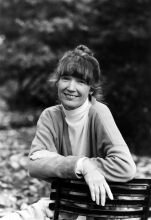
Anne Tyler was one of the pioneers in If Morning Ever Comes (1964), in which a young man returns to his family, and in The Tin Can Tree (1965), about the impact of the death of a child on a family system. A multi-generational family system becomes the central subject in her Searching for Caleb (1975), which focuses on family mythology and the search for a familyfs deepest roots. Another novel of the 1960fs congruent with family systems theory was Joyce Carol Oatesfs Expensive People (1968), a memoir of family dynamics by a son who regards himself as gthe abortion that failed.h
Around the same time, a powerful family system novel appeared by Americafs greatest living writer, Toni Morrison. The Bluest Eye (1970), focusing on the fate of an unattractive daughter in a poor black family, has extraordinary affinities with family systems theory, which is also relevant to Sula (1973), focusing on the lives of two women and their tightly knit black community, to Song of Solomon (1977), revolving around a black familyfs search for previous generations, and to some extent to the child abuse and violence in Tar Baby (1981). Another significant minority perspective of this decade was Maxine Hong Kingstonfs The Woman Warrior (1975), detailing the complex patterns of multigenerational Oriental family systems.
Male perspectives on related issues also became conspicuous about this time. Josephfs Hellerfs Something Happened (1966) provided many insights into family dynamics at work as well as at home. Family systems are also often quite striking in Updikefs Rabbit novels, beginning with Rabbit Run (1960), haunted by the death of a child in the care of alcoholic mother; Rabbit Redux (1971), dealing with drug addiction, sexual degradation, and the death of a teenager; and Rabbit is Rich (1981), focusing on marijuana, cocaine, and sex addictions, along with other varieties of repetition compulsion. In 1983 Robert Ferrofs The Family of Max Desir provided a rare look at the emergence of male homosexuality in a family system, a subject taken up also by David Leavitt in two of the short stories in his collection, Family Dancing (1984), and to a limited extent in David Plantefs trilogy, The Francoeur Novels: The Family, The Woods, The Country (1978-1983), which traces the evolution of a French Canadian family in Providence, R. I. Other minority perspectives were soon heard from. Louise Erdrichfs Love Medicine (1984) is a dazzling portrait of multigenerational repetition compulsion in two Native American families, and Rosellen Brownfs Civil Wars (1984) adds race to the usual family tensions.
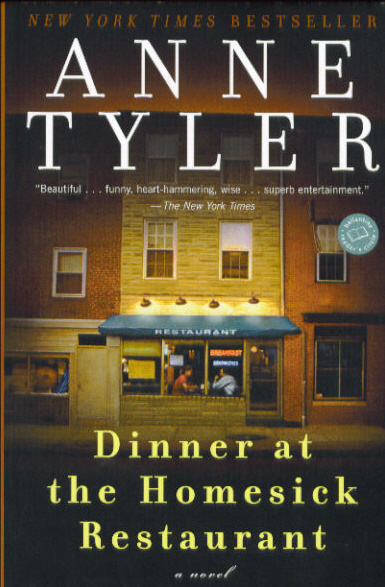
But family fiction in the early eighties was dominated by mainstream writers, especially Anne Tyler, whose Dinner at the Homesick Restaurant (1982) is one of the most astonishing family systems novels to date, especially on the subject of familial repetition compulsion: "In fact, they probably saw more of each other than happy families did. It as almost as if what they couldn't get right, they had to keep returning to. (So if they ever did finish dinner, would they rise and say good-bye forever after?)."
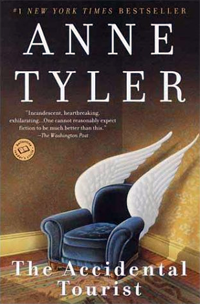
This was followed by The Accidental Tourist (1985) in which Tyler explored systemism in great detail. The same year saw the appearance of Carolyn Chutefs The Beans of Egypt, Maine -- an exploration of poor white incestuous family systems which, remarkably enough, manages also to be humorous; and Lee Smithfs Family Linen, a murder mystery about nearly a century in the life of a Southern family in which childhood memories are recovered by hypnosis. A year later a family systems novel appeared which became an even more popular movie than The Accidental Tourist: Pat Conroyfs Prince of Tides (1986), a thorough examination of a poor white Southern family system. Another novel made into a successful movie, Josephine Humphreyfsf Rich in Love (1987), revealed the dynamics of an gordinaryh middle class family system, and Laura Furmanfs Tuxedo Park (1986) explored the meaning of gfamily loveh in a similar context.
The archetype of the family novel of the last two centuries also emerged in 1987: Kaye Gibbonsfs Ellen Foster. The first-person narrator reads gthe Bronte sistersh (9) and, like her predecessor Jane Eyre, seeks a new family. As her sickly mother weakens and her alcoholic father abuses her, she tries desperately to join the families of relatives, friends, and teachers to no avail. Finally, she is accepted by a family that takes in foster children. Confused about their name, she calls herself Ellen Foster (87). This name epitomizes the plots of the new family novels and the need to update Freudfs gfamily romanceh to focus on the reader as well as the protagonist as an gorphanh actively seeking a more functional family.
African-American family systems returned to the limelight with Terry McMillanfs Mama (1987), a powerful study of the dedication of the mother to the family as a unit rather than to the men in her life. A similar theme informs one of the most famous of all novels in this genre, Toni Morrisonfs Beloved (1987), which examines the impact of slavery on the African-American family system. A less familiar exploration of ethnic family systems is Eric Larsenfs account of three generations of a Norwegian family in Northfield, Minnesota, An American Memory (1988). In 1990 Mexican-American authors dominated this field. Arturo Islas traced the evolution of a large Mexican-American family, with homosexuality again a minor theme, in Migrant Souls; while Rolando Hinojosafs Becky and Her Friends was but the latest in his series of novels following generations of Mexicans and Anglos in the Rio Grande Valley of Texas. Lionel Garciafs Hardscrub is also set in Texas, but focuses almost exclusively on a lower-class Anglo family marred by Oedipal rivalry and transgenerational repetition.
Father-son issues also dominate Richard Russofs The Risk Pool (1988) and Russell Banksf extraordinarily powerful representation of alcoholism, Affliction (1989). Alcoholism often plays a role in the male sexual abuse that affects the lives of three generations of women in Elizabeth Winthropfs In My Motherfs House (1988), in Jane Smileyfs prize-winning family-systems rewrite of King Lear, A Thousand Acres (1992), and in Dorothy Allisonfs Bastard Out of Carolina, starring a young woman who wants a family like those in books because her own is destroyed by secrets.
The potential of family systems theory to illuminate our understanding of this genre of contemporary American fiction may be suggested by a little closer look at Anne Tylerfs novels. Joseph Voelker reveals many family dynamics in her novels but concludes that "in her sense of self, Tyler has one conviction in common with Lacanian theory -- that at center the self is unstable and constituted by linguistic patterns" such as family anecdotes and myths of selfhood; even heredity is defined as a myth (50). Such a psychology could be hopeful, for if heredity and the self are but unstable products of linguistic patterns perhaps they can be changed and a new self created. However, heredity and family myths prove remarkably resistant to change in Tylerfs novels. She identifies a very stable core in the self which is also difficult (though not impossible) to transform. In this and many other respects family systems theory seems to fit her novels much better than Lacanian theory.
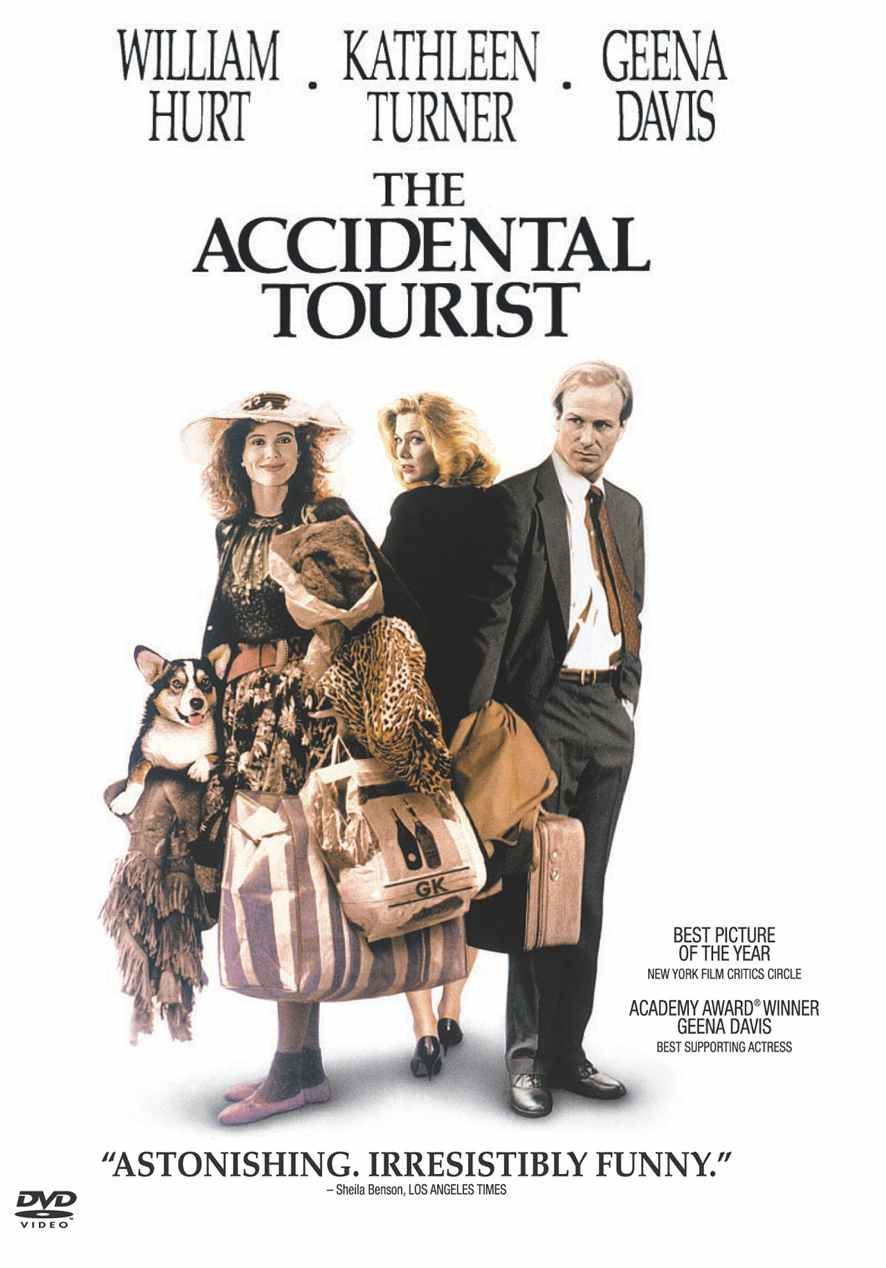
In fact the word gsystemh is the keynote of The Accidental Tourist. In the opening scene Macon tells Sarah gIfve got a system, Sarah. You know I drive according to a system.h She replies, gYou and your systems! .... Macon, I want a divorce.h When she leaves him, thatfs ghis chance to reorganize ... The fact was that running a house required some sort of system, and Sarah never understood that.h The system he sets up starts to weary him but he canft skip any part of it because gthere was such a danger in falling behind with your system.h
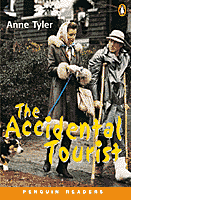
Eventually the parts of the system seem to conspire against him and he ends up breaking his leg, causing him to return to his family of origin. This is the closed gsystemh that is the primary cause of the failure of his marriage because he never really left it: gHe almost wondered whether, by some devious, unconscious means, he had engineered this injury -- every elaborate step leading up to it -- just so he could settle down safe among the people he started out with.h
The concept of the closed system is illustrated over and over again. When he told his sister Rose how much he liked the fact that gNo one else in the world had the slightest idea where he was,h they decide not to answer the phone. When Rose mails off his chapters she leaves off the return address. When a neighbor comes by, Macon blocks the door. His dog Edward then takes up the job, tearing open the screen door to get at the next neighbor and attacking family members who try to leave; itfs his gsheep herding instinct .... He hates to see anyone straying from the flock.h When Macon leaves on a business trip, he panics and calls back, only to find that Edward has cornered one of his brothers in the pantry. gMacon imagined how safe the pantry must feel .... What he wouldnft give to be there!h
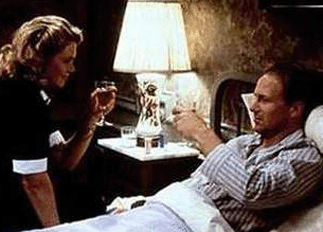
Obviously wives are gextraneoush in this system, as Maconfs grandfather put it. Both of Maconfs brothers failed at marriage and returned to the family of origin and the same fate awaits Rose. Such dysfunctional family systems are quite stable and usually simply reproduce themselves with only minor variations. A few people may enter or escape but they usually remain closed systems. The typical Tyler family, the Pecks in Searching for Caleb, remains in its own domestic sphere as much as possible, imprisoned by the fear of outsiders. As The Clock Winder ends, the Emerson family even seals itself up inside its home, ostensibly against a plague of cicadas.
In a dream Maconfs grandfather warns him in The Accidental Tourist: gYou want to sit in this old house and rot, boy? Itfs time we started digging out! How long are you going to stay fixed here!h Digging out is also the primary subject of Searching for Caleb: Duncan, Caleb's great-nephew, tries to create a personality different from what his family's traditions dictate, but he fails. In The Clock Winder, on the other hand, the mother, extremely dependent on her husband, panics when he dies and finally allows an outsider to take his place as the clock winder, but in other respects the system remains closed.
Needless to say there is little individuation in such systems. The group is the unit, not the individual. The Learys gcanft so much as close a curtain without this group discussion.h Controlling and suppressing the individualism of others is particularly obvious in one of the brothers in Tin Can Tree and the son in If Morning Ever Comes. Another way individualism is denied in dysfunctional families is by the maintenance of rigid roles. Tyler provides examples of this phenomenon better than those of most therapists. In The Accidental Tourist, for example, Rose seems the one most likely to escape the Leary system for she announces to an entire dinner party, glove is what it is all abouth and eventually she marries and leaves. Her husband reports, gour marriage was working out fine ... But shefd worn herself a groove in that house of hers, and she couldnft help swerving back into it.h He goes to the Leary house only to see her driving some neighbors somewhere: gI got the funniest feeling, like the car was driving her -- like she was just gliding past helpless and couldnft do a thing but send me one long look before she disappeared.h
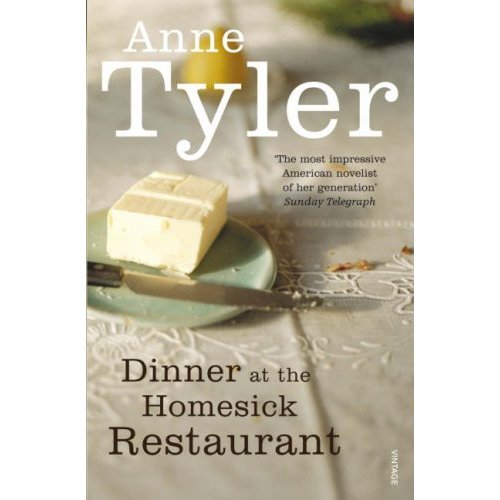
Dinner at the Homesick Restaurant at times reads like a discussion between Anne Tyler and her psychiatrist husband about the grooves, the rigid roles defined in family systems theory.
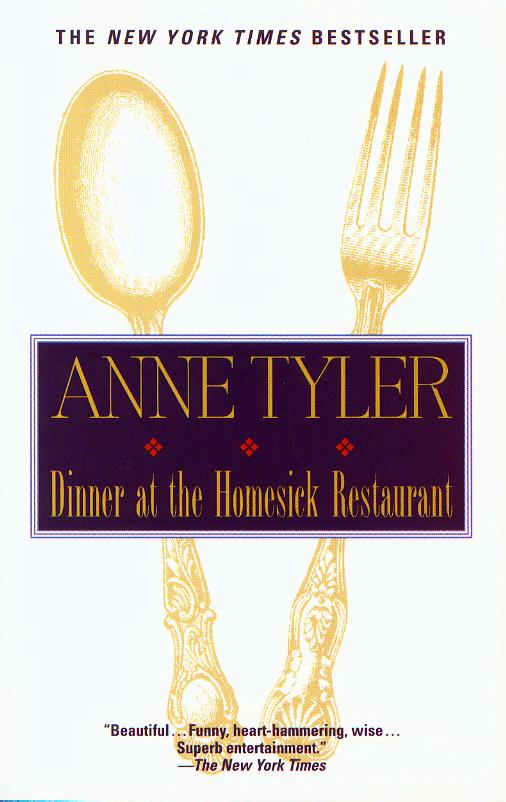
To Jenny, for instance, during one of their early attempts at finishing a dinner in her brother Ezra's restaurant, "her family seemed too small. These three young people and this shrunken mother, she thought, were not enough to sustain the occasion. They could have used several more members -- a family clown, for instance; and a genuine black sheep, blacker than Cody; and maybe one of those managerial older sisters who holds a group together by force" (107-8). Tyler lists precisely the family systems roles she does not include in this novel: the hero child; the scapegoat; and the clown or mascot.
In Breathing Lessons she reveals the connections between the roles and the grooves, the repetition compulsions. When Maggie and her husband drive to the funeral of the husband of her best friend, they repeat the roles they played at her wedding. The repetition compulsion (the attempt, conscious or unconscious, to reenact trauma in order to master it retrospectively) is of course one of the key concepts shared by psychoanalysis and family systems theory, but the latter stresses repetition between individualsf lives as well as within an individualfs life. As roles are repeated, time stops in closed systems. In the Leary household the ggrandparents had been dead for years, but the table remained set up as if for one of their eternal bridge games.h Sarah complains that gThey always go to one restaurant, the one their grandparents went to before them, and even there they have to rearrange the silver and set things up so theyfre sitting around the table the same way they sit at home.h The reenactment is often a replay of childhood scenes because it is a repetition of family as well as individual dynamics.
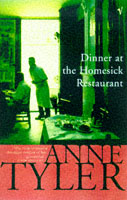
The obvious example are the recurrent attempts of Jenny's family to return to the homesick restaurant to finish the family meal. Tyler shows very well how often this unfinished business, usually unconscious, drives the individual to abuse, striking without warning, against her will, as in Jenny's treatment of her own child:
`No!' said Becky, and Jenny hauled off and slapped her hard across the mouth, then shook her till her head lolled, then flung her aside and ran out of the apartment .... All of her childhood returned to her: her mother's blows and slaps and curses, her mother's pointed fingernails digging into Jenny's arm, her mother shrieking, `Guttersnipe! Ugly little rodent!' .... Was this what it came to -- that you never could escape? That certain things were doomed to continue, generation after generation?" At one point Pearl, Jenny's mother, recognizes "that her family has failed.... There is no one to accept the blame for this but Pearl herself, who raised these children single-handed and did make mistakes, ... Still, she sometimes has the feeling that it's simply fate, and not a matter for blame at all. She feels that everything has been assigned, has been preordained; every one must play his role.
The words "fate" and "doomed" remind us that this sense of the familial repetition compulsion defies Lacanian theory and is much older than the individualist psychologies; in our culture it is at least as old as the ancient Greek tragedies and we can trace the concepts of family and group karma far back in Indian religion and philosophy.
As in family systems theory, the situation is not entirely hopeless, of course, as some of the original individuals do escape and some new people do manage to enter these family systems. Rose does not escape, but Macon does.
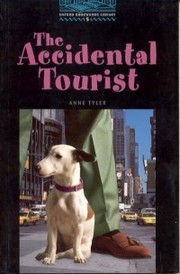
His dog Edward becomes the scapegoat, the identified patient, who leads him to a (canine) therapist, Muriel, who heals him as well as Edward. Macon finds some anger to help him stand up for himself to Sarah and stop taking blame for everything. Then he finally begins to think for himself, overcoming his passivity and dependence.
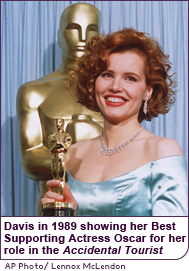
At last he chooses love over fear and depression, Muriel over Sarah. However, the family does not change: they just trade Macon for Julian, who must move in with the Learys to be with his wife.
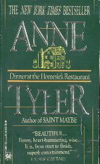
Ezra in Dinner at the Homesick Restaurant , however, tries to heal the whole family. While he does not succeed, he does create a model of a more open system, with his customers freely coming and going, enjoying a menu of change and ethnic diversity in a close, but not too close, relationship with those in authority. If we extrapolate from the ending, Ezra will keep reenacting the dinner scene with his own family of origin until they get it right, and maybe some day they will, at last making all the unfinished business conscious, dealing it with openly and honestly.
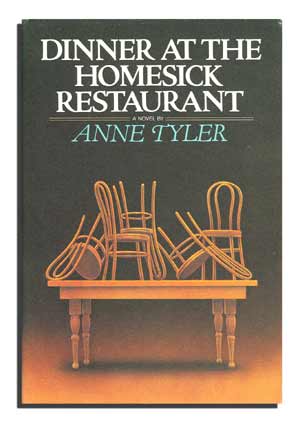
Family therapy, especially family systems therapy, created a climate of acceptance for, if not a direct influence on, such novels, but its value as an approach to literature is not limited to contemporary works. Family systems theory provides many insights into literature of other countries and other times as well. In Tuxedo Park (1986), for example, Laura Furman admits that her account of gfamily loveh was influenced by an early model of the genre, Christina Steadfs The Man Who Loved Children (1940). Though the novel is set in Tylerfs beloved Baltimore, Stead is Australian. Moreover, as we have seen, D. H. Lawrencefs fiction is remarkably congruent with family systems theory, perhaps because the Victorian culture in which Lawrence grew up generated an interest in family issues as intense as those in contemporary America. Cohen has shown the applicability to Victorian literature of the family systems theory based on schizophrenia research, but that inspired by addiction treatment seems equally if not more congruent.
Moreover, as a teacher of Victorian literature for over a quarter of a century I have become aware of many reader responses which invite other applications of family systems research, perhaps along the lines of Norman Hollandfs Five Readers Reading.. gBecause relational model theories locate psychological meaning in the intermediate, interactive space between self and other, they are also particularly applicable to reader-response criticismh (Schapiro 24). Hence Rogers focuses on gthe elaborate matchingh between the personal universes of the creator of the work of art and the one who apprehends it gcognitively and affectively, at both conscious and unconscious levelsh (33). Many of the affective and unconscious components of the personal universes of creator and perceiver are generated by familial relationships. Hence, with a truly detailed and inclusive model of family dynamics, the family systems critic is able to identify more completely gthe elaborate matchingh of the respective family dynamics of the creator and perceiver of the work of art. If the readerfs self is polyphonic, as Bakhtin suggests, greadingh becomes a dialogue with internalized others, many from the readerfs own family of origin. This version of reader-centered criticism can be very powerful, intersecting at times with another discipline: bibliotherapy (Bump gReaderh).
The value of such an approach to Jane Eyre has been explored (Bump gJaneh), but it is even more relevant to other novels by the Bronte sisters because inevitably they were reacting to their sibling, Branwell Bronte, an alcoholic and drug addict. Their need to temper their love for him with detachment led to anew representation of love in fiction, one that demands a revision of J. Hillis Millerfs pioneering studies, The Disappearance of God and The Form of Victorian Fiction. Miller showed that with the gdisappearanceh of God in literature in the last two hundred years artists increasingly turned to human relationships as substitutes. The primary substitute has of course been romantic relationships like that of Catherine and Heathcliff in Emily Brontefs Wuthering Heights. Yet, preoccupied with this kind of love, rooted in the courtly love traditions of the twelfth century, critics have failed to notice the emergence of a new model of love and the family in the second generation in Wuthering Heights and in the novels of the other Bronte sisters, Charlotte and Anne. The model is most fully developed by Anne, whose The Tenant of Wildfell Hall focuses on the wife of an alcoholic. Anne recognized that alcoholism is often transgenerational: the heroine's father is an alcoholic and her alcoholic husband, Arthur, attempts to transmit alcohol abuse to his son. Other addictions represented in the novel are to laudanum and gambling. Hence it is not too surprising that even the heroes choose secrecy over direct, honest communication. The narrator, Gilbert, lies about how often he goes to see the heroine, Helen. Helen calls herself by a lie, "Mrs. Graham," and refuses to let her relatives know about the alcoholism and the verbal and physical abuse in her new family. And, of course, her alcoholic husband, Arthur, is a liar, especially when talking to Helen. The family systems critic aware of the nature of addictions would focus especially on how Helen plays the standard role of the gcoalcoholich or "codependent." At first refusing to consider changing her own attitudes, she is addicted to fixing and controlling him. She is caught in all the usual double binds. She wants to cure his alcoholism but she enables it by accepting blame and responsibility for his actions. Aware of the hole in his soul, she tries to change him both gby shaming himh and by building up his self esteem.
Nor is she the only gcodependenth in the novel. A critic familiar with addictions to people knows that men are just as likely to exhibit this behavior. Both Gilbert and Arthur end up making a god out of the loved one, as Jane Eyre admits she did with Rochester: gMy future husband was becoming to me my whole world; and more than the world: almost my hope of heaven. He stood between me and every thought of religion, as an eclipse intervenes between man and the broad sun. I could not, in those days, see God for his creature: of whom I had made an idol.h Similarly, Gilbert gidolizesh Helen, and Arthur actually tells her he is willing to sacrifice his soul for her. Of course Arthur has already sacrificed his soul to his chief idol, alcohol, but Anne Bronte explores the relationship of gcodependenceh to chemical dependence more fully in the addictive personality of Lord Lowborough. Like Gilbert and Arthur he is gbesottedh by a woman. Marriage solves this problem no better than it did for Helen. But it is his dependence on his male friends, especially Arthur, which is more threatening to his health. He overcomes his addiction to gambling, only to switch to chemical dependence (alcohol and laudanum) because he can not resist their attacks on sobriety.
The only person who breaks out of the cycle of abuse and addiction is Helen, perhaps because she adopts a form of the talking cure. In her case as in Jane Eyrefs (and the Bronte sistersf) it is the writing cure. In her journal, which is eventually read by others, she unburdens herself of the family secrets, one of the primary therapies in family systems theory as in many others (Imber-Black 73-75ff.) This leads to self-knowledge. Asking herself, gwhat shall I do without him,h she admits her loneliness, beginning to move toward awareness of the hole in her soul she is trying to fill with another person. Like Jane Eyre she must first recognize her idolatry.
The solutions Helen eventually adopts are those emphasized in the treatment of "coalcoholism": disregarding the alcoholic's promises, lessening dependence on the opinions of others, and learning to set boundaries, to express feelings, and to live in the present moment. She begins to feel serenity, self-esteem, and, finally, independence: gI was determined to show him that my heart was not his slave, and I could live without him if I chose.h Becoming aware of the danger to self and others of his alcoholism, she turns Arthurfs fate over to God, and is able to remove herself and her son from the alcoholic household.
But what about Wuthering Heights, which does not seem to be about chemical dependence at all? It is a good test case because it is discussed by both Cohen and Schapiro. Schapiro cites Gilbert and Gubarfs comment on the gshift in family dynamicsh caused by the arrival of the orphan Heathcliff (46), but her exploration of those dynamics adds only the preoedipal focus on the mother to the oedipal focus on the father. Schapirofs distinctive contribution is to reveal the psychodynamics of rage, gdirected both inward and outward, at self and other, and the consequent intrapsychic splittingh (47). In her view the gend of the novel achieves a restructuring and integration of selfh (61). Cohen demonstrates that the two heroines, Catherine Earnshaw and Catherine Linton, are mediators and stress relievers for others in their family systems and thus victims of split loyalties, triangulation, and scapegoating. Cohen documents Catherine Earnshaw's oscillation between hysteria and invalidism (especially anorexia) and resists reading the ending as hopeful. Though the family's immediate death is prevented by the intervention of the servant, Nelly Dean, the ending is "the beginning of yet another spiral leading to that degenerative conclusion embodied by the Cathy-Heathcliff story" (109).
Detailed as these readings are, a critic informed by the family systems theory derived from the treatment of chemical dependence can add many insights to these. S/he would emphasize that as soon as Lockwood asks that he be told their stories by Nellie, the novel becomes the histories of several family systems and all the characters in the systems, male as well as female, living and dead. Focusing on the family as a unit at Wuthering Heights we discover one of the best illustrations of a closed system in literature. They are not merely extremely isolated from others, they are actively hostile: instead of welcoming the protoreader, Lockwood, they refuse to come to his aid as six dogs attack him inside the house, a welcome that makes Edwardfs fury in The Accidental Tourist seem but a tempest in a teapot. Like the Learys, no one says hello or good-bye at Wuthering Heights, and if strangers find the Learysf card games incomprehensible, even the reader is excluded from some of the activity at the Heights, for at times it is presented in a dialect almost unintelligible to all but those raised in the neighborhood. Even members of the family at times find Josephfs gspeech difficult to understandh when he got excited and ghis jaws worked like those of a cow chewing its cud.h
When Lockwood does manage to get past some of the rigid boundaries, Hareton Earnshaw is instantly angry at him and "Mrs. Heathcliff" at first won't even speak to him. Many readers no doubt identify with Lockwoodfs sarcastic understatement, gI began to feel unmistakably out of place in that pleasant family circle.h When Lockwood tries to escape from the system, a dog prevents him, as in the Leary household. In his case, two dogs attack and pin him to the ground and a servant asks, gAre we going to murder folk on our very door-stones?h The family motto, "Every man's hand was against his neighbor," appears to Lockwood in a dream and he adopts it has his own. When one of the ancestors, a recently dead family member. comes to him as a child in the dream, crying gLet me in .... Ifm come home,h Lockwood, already imitating the others, slashes her wrists on the broken window and replies, as the blood stains his bed, gIfll never let you in.h
Lockwood proclaims to the family, gIfm not going to endure the persecutions of your hospitable ancestors,h but as soon as one enters a family system of any age one is in the presence of ancestors. gBefore passing the thresholdh for the first timeh Lockwood looked up and gdetected the date e1500f and the name eHareton Earnshawf.h He then confronted the latest incarnation of that name who, when he was learning to read, began by reading his own name carved on the door. This is an example of transgenerational repetition in the same house for centuries almost beyond the imagination of readers in America, which had just been discovered in 1500. At Wuthering Heights names are simply repeated, as if there were little difference between the generations, as if they kept adopting the same roles and following the same script century after century. When we add to name repetition the habit of cousins marrying cousins in a complicated genealogy, we can see why readers of the novel are as confused as Lockwood was when he first entered the family. Readers get to feel exclusion from a closed system as they wonder which Catherine, for example, is being discussed. Because of gthe thousand forms of past associations, and ideash a family member gawakens, or embodies,h even the inmates become bewildered: Heathcliff, for example, at times believed that Catherine II was Catherine I and often gHareton seemed a personification of my youth, not a human being; I felt to him in such a variety of ways, that it would have been impossible to have accosted him rationally.h
Thus, as Lockwood put it, "Time stagnates here," not only in choice of names but also in repetition of abuse and addiction. After Hindley's funeral Heathcliff went to Hareton, "lifted the unfortunate child on to the table and muttered, with peculiar gusto -- 'Now, my bonny lad, you are mine! And we'll see if one tree won't grow as crooked as another, with the same wind to twist it." Heathcliff says later, "I can sympathize with all his feelings, having felt them myself. I know what he suffers now, for instance, exactly -- it is a mere beginning of what he shall suffer, though. And hefll never be able to emerge from his bathos of coarseness and ignorance. Ifve got him faster than his scoundrel of a father served me, and lower .... And the best of it is, Hareton is damnably fond of me! Youfll own Ifve outmatched Hindley there.h As family systems histories document so often, the habit of abuse binds the victim to the abuser: Hareton gtook the masterfs reputation home to himself, and was attached by ties stronger than reason could break -- chains, forged by habit.h One of those habits was patrolling the boundaries of the closed system like a guard dog: Hareton stones even his old nurse Nelly when she tries to return to the Heights. The law of repetition compulsion in this kind of a patriarchal family system is, in Heathclifffs words, that gThe tyrant grinds down his slaves and they donft turn against him; they crush those beneath them.h When Heathcliff elopes with Isabella he hangs her dog to prevent its barking; when Isabella finally escapes from him she passed by gHareton, who was hanging a litter of puppies.h Heathclifffs next student of sadism, Linton, learns the same lesson: gHefll undertake to torture any number of cats.h Sadism infects all who enter that system, whether or not they come under Heathclifffs direct tutelage. The second Catherine, for example, comes from a different family system but soon gseemed to have made up her mind to enter into the spirit of her future family, and draw pleasure from the griefs of her enemies.h
A chemical dependency family systems theorist would focus on the addictions that result from these abuses. Like Lockwood, such a critic would say to Nelly Dean, gI am interested in every character you have mentioned.h Hindley, for example, an apparently minor character, emerges as an important father figure. He has a process addiction -- gambling -- and eventually mortgages all of his land, but his drug of choice is alcohol. In the habit of coming ghome rabid drunk,h he is often in a murderous rage. Nelly tries to control his drinking, but Heathcliff exclaims gIt is a pity [Hindley] cannot kill himself with drink ... Hef s doing his very utmost but his constitution defies him.h Hindley is a true alcoholic, unable to stop even when he wants to. For example, ghe kept himself soberh in order to attend his sisterfs funeral but he grose in suicidal low spirits, as fit for the church as for a dance; and instead, he sat down by the fire and swallowed gin or brandy by the tumberful.h Like many alcoholics, he was apparently trying to medicate depression with alcohol. Alcohol is his way out of a depressing family system. When he dies at the age of 27 we learn that "he has spent the night in drinking himself to death deliberately."
This novel reminds us that in such family systems, women are not the only victims of split loyalties, triangulation, scapegoating, invalidism, and anorexia. The story proper begins with one of the patriarchs named Earnshaw bringing Heathcliff into the system. He is named him after a child who died in childhood, but like Jane Eyre he is an outsider and the tension is intense. Absorbing that tension, Mr. Earnshaw soon succumbs to invalidism and death. Nelly says, gIt hurt me to think the master should be made uncomfortable by his own good deed. I fancied the discontent of age and disease arose from his family disagreements, as he would have it that it did.h Nor are women the only ones who manipulate illness to control others: Linton Heathcliff does so even more consistently than Catherine does and, like her, ends up a victim of the family dynamics he tries to control.
A critic oriented to process dependencies such as addictions to control and to rage can identify Catherinefs personality as addictive before she succumbs to anorexia. Catherine tries to enlist Nelly in her means of control, asking her to communicate to others the peril of provoking her, reminding them gof my passionate temper, verging, when kindled, on frenzy.h When Nelly calls her bluff Catherine turns to anorexia. Nor are rage and fasting the only ways we see her control others: gI have such faith in Lintonfs love, that I believe I might kill him, and he wouldnft wish to retaliate.h
Of course, the most obvious process addiction in the novel is the "love" of Heathcliff and Catherine, one of the most famous examples in literature of pure enmeshment, a total loss of boundaries that seems to triumph over death, sustaining the myth that romantic love is a viable form of spirituality. A family systems critic oriented to addictions can explore parts of this pattern that are often overlooked. Catherine is not the only character to choose anorexia as a means of self-destruction. Early in their relationship, like an aspiring saint in the courtly school of love, "fasting and reflection seemed to have brought" Heathcliff to the point where he could ask Catherine to "make me decent." After he loses Catherine to anorexia, Heathcliff finds himself also unable to eat until finally, after swallowing nothing for four days, he manages to die. Despite, or perhaps because of, this conclusion to their relationship, this half of the novel remains popular, often the only half made into movies.
Movie versions rarely show what we now call functional behavior. Yet some of the children at Wuthering Heights are able to stand up for themselves against abuse. Heathcliff defends himself against Cathy's laughter, and Cathy confronts her father. Nelly defends herself against Catherinefs physical abuse: gYou have no right to nip me, and Ifm not going to bear it.h And Edgar Linton follows her example, complaining to Catherine, gYoufve made me afraid and shamed of you.... Ifll not come here again.h These defenses do not stop the abuse, but readersf childhood memories of similar instances of courage may be positively reinforced in such passages.
Longing for a healthier family is better satisfied by the second generation. Closed family systems change usually only in response to their almost complete disintegration and/or to intervention from the outside. In this case, the influence of Catherine Earnshawfs husband, Edgar Linton, seems to be the key. His daughter, Catherine Linton, seems much ghealthierh than her mother and thus some readers may perceive that transgenerational repetition is not inevitable. After a considerable struggle she manages to transplant some flowers from Thrushcross Grange to Wuthering Heights. They become the symbol of the change. She makes amends to Hareton for her sadistic behavior and helps him to read. Hareton is then able to give the lie to Heathclifffs assertion, gIfve got him faster than his scoundrel of a father served me, and lower.h Ultimately, they transform Wuthering Heights into an open system. The protoreader, Lockwood, recounts, "I had neither to climb the gate, nor to knock -- it yielded to my hand. That is an improvement! I thought .... Both doors and lattices were open." Many readers, like orphans, seek such functional family systems in life but find them only in fiction.
When we look beyond the Brontes to the rest of Victorian fiction, we find other novels in which alcoholism is prominent and many others in which the dependencies are more subtle. The Mayor of Casterbridge, for example, revolves around chemical dependence. Like Arthur, Helen, and little Arthur, the main characters of this novel -- Henchard, his wife Susan, and daughter Elizabeth -- display almost all the features associated with the classic alcoholic family. Henchard, the alcoholic, suffers from many of the accompanying afflictions: "self-will run riot," low self-esteem, shame, guilt, self-castigation, self-punishment, loneliness, a death wish, and a tendency to depression. In his interactions with people he is often impulsive, unprincipled, quarrelsome, blaming, controlling, and verbally and emotionally abusive. Susan, like Helen, emerges as a classic coalcoholic or codependent, but with more severe pathology and less hope. She agrees to drink with him, resigns herself to her fate, tunes out his verbal abuse at first and later makes only mild protests and timid threats. She accepts being auctioned off in order to escape from him, but returns and puts herself entirely in his hands for the sake of her daughter. A family systems critic can explore the psychosomatic reactions she experiences when she sees her husband, her irresolution when he challenges her, and her repression of her emotions. A student of coalcoholism is not surprised to discover that instead of rejoicing when she finds that he has sobered up, she is "overpowered," "down," and wants to die, because the only life she knows is blaming and being the victim. She feels better when he admits his shame, but still refuses to forgive him. She has an even stronger death wish than Henchard does, and, like him, she suffers from low self esteem, loneliness, humorlessness, and sadness. Some readers identify more with Elizabeth Jane, a classic child of an alcoholic, who also suffers from low self-esteem. A family systems critic can reveal why she too is "sober " and humorless, and why her desire to see, to hear, and to understand is "repressed."
When this family first appears it is characterized by loneliness and silence. Both parents are obsessed with secrecy, the standard rule of many if not most family systems. Their meeting site is secret and they agree that secrecy is necessary to protect their shame. Henchard insists on keeping the secret of her parentage from Elizabeth even though his friend Farfrae recommends that he tell the truth. Also unable to tell her daughter the truth, Susan lies to Henchard and constantly worries about being discovered. At first Elizabeth is unsuspicious but eventually becomes aware (as many readers did) of the presence of secrets in the system and becomes troubled by them.
What is most remarkable about this novel from the point of view of the family systems approach to chemical dependency is that when Henchard sobers up some of his actions foreshadow those to be recommended by Alcoholics Anonymous, Al-Anon, and many other twelve-step groups in the next century. What is most surprising in a Hardy novel, the protagonist briefly experiences faith in a higher power, the equivalent of steps two and three: "Elizabeth-Jane heard him say, 'Who is such a reprobate as I! And yet it seems that even I be in Somebody's hand!f" When Henchard tells all to Farfrae it is very much like a fifth step . He then proceeds to what would be the eighth and ninth steps: making amends. He feels genuine remorse, is kind to Elizabeth-Jane and Susan, apologizes to Susan, and determines to make amends to her.
Like many A. A. members to come after him, Henchard renounces secrets and adopts a stance of rigorous honesty. He scrupulously reveals his debts and admits to the whole town that he auctioned off his wife. He even gives up some measure of control. For example, he initially attempts to control the choice of a last name for Elizabeth but he catches himself, backs off, and tells her not to agree with his choice just to please him. Even when Elizabeth chooses Farfrae as her lover (whom he almost killed) "Henchard vowed that he would leave them to their own devices, put nothing in the way of their courses, whatever they might mean." However, Henchard remains isolated in the novel, conspicuously without ready access to a higher power and the support of a group such as A. A. Hence his efforts alone are not enough to save the family, and he returns to drinking and starves himself to death. Nevertheless, as in Wuthering Heights, the second generation, Elizabeth-Jane and Farfrae, seems more functional.
What about Victorian novels that do not revolve around alcoholism, written by authors who did not grow up in such families? Alcoholism is less central in Great Expectations, for example, but its archetypal Victorian opening suggests how many novels of the time appeal especially to readers seeking ghealthierh families. The first words are "My father's family," announcing orphan Pip's preoccupation with finding a family. In this regard he was no doubt a protoreader, representative of many of the Victorian readers who lived in gnormalh families but still felt like orphans. A family systems critic can easily demonstrate that, like Wuthering Heights and many other Victorian novels, Great Expectations is an excellent illustration of transgenerational transmission of abuse and rigid roles. We learn that the alcoholic father of Pipfs stepfather, Joe, beat both Joe and his mother. As what we now might call the "hero-child" -- the oldest -- Joe tried to protect his siblings. He had to sacrifice his childhood and go to work to support his family because his alcoholic father did not. It is no surprise that Joe accepts verbal and physical abuse from his wife and wants to take on all the abuse to protect Pip. Indeed he may have chosen his wife to accept the punishment his father should have received from his mother. In any case Mrs. Joe had the kind of addictive personality he was used to: a rageaholic (like Catherine I in Wuthering Heights) obsessed with controlling her house and everyone in it. Pip, of course, watches Joe as his role model and himself accepts verbal and physical abuse from Mrs. Joe who stated that he should never have been born and wished that he was dead. In fact Pip becomes the scapegoat for her entire family system.
Hence we are not surprised that he "falls in love" with Estella and accepts her sadistic treatment of him. We learn that she behaves this way because she learned it from the previous generation (her mother figure, Miss Havisham, used Estella to avenge wrongs done to her). Illustrating the basic therapeutic rule, "Recover or Repeat," Estella then goes on marry a man who physically abuses her. Today we might call Pip's "love" for Estella (like the love of Heathcliff and Catherine) an addiction and/or a parody of courtly love, though some Victorians would have called it idolatry. For Pip, it was an addiction fueled by his newly acknowledged shame, "the smart without a name." He tried to fill what we might call the hole in his soul with another person, a solution that would not have worked with a saint, much less a sadist. "Her contempt for me was so strong, that it became infectious, and I caught it"; yet he wanted to see her again and again. As "compensation" for his shame he soon identified himself with her extraordinarily dysfunctional "family" and adopted her view of Joe and a stance of "vicious reticence" or lying. Needless to say, secrecy pervades these families. It grows steadily in Pip especially because of his furtive connection with an alternative father figure, Magwitch, until "the secret was such an old one now, had so grown into me and become a part of myself, that I could not tear it away." The popularity of this novel is due in part to how well these patterns match those in the family holograms of many readers.
Hopefully, these examples of the extraordinary compatibility of these novels with family systems theory will encourage critics to discover how this theory is uniquely qualified to reveal family dynamics not only in much of the art produced in two great ages of consciousness of the family -- Victorian England and contemporary America -- but in many other literary works as well.
Works Cited
Bradshaw, John. Bradshaw On: The Family, A Revolutionary Way of Self-Discovery. Pompano Beach, Florida: Health Communications, 1988.
Bump, Jerome. "D. H. Lawrence and Family Systems Theory." Renascence 44.1 (1991): 61-80.
---- "Jane Eyre and Family Systems Therapy." In Teaching Jane Eyre. New York: Modern Language Association: 1993. Pp. 130-138.
---- "Reader-Centered Criticism and Bibliotherapy." Renascence 42.1-2 (1989-90): 65-86.
Cohen, Paula Marantz. The Daughter's Dilemma Family Process and the Nineteenth-Century Domestic Novel. Ann Arbor: U of Michigan P, 1991.
Crowley, John William, The White Logic: Alcoholism And Gender In American Modernist Fiction. Amherst : U of Massachusetts P, 1994.
Dardis, Tom. The Thirsty Muse : Alcohol And The American Writer. New York : Ticknor & Fields, 1989.
Denzin, Norman K. Hollywood Shot By Shot : Alcoholism In American Cinema. New York : A. de Ruyter, 1991.
Flax, Jane. Thinking Fragments: Psychoanalysis, Feminism, and Postmodernism in the Contemporary West. Berkeley: U of California P, 1990.
Foley, Vincent D. An Introduction to Family Therapy. 2nd Ed. Orlando: Grune and Stratton, 1986.
Freud, Sigmund. Civilization and Its Discontents. New York: W. W. Norton, 1961.
----- The Ego and the Id. Ed. James Strachey. New York: W. W. Norton, 1960.
Goodwin, Donald W. Alcohol and the Writer. Kansas City : Andrews and McMeel, 1988.
Graff, Gerald. Literature Against Itself. U of Chicago P, 1979.
Hochman, Baruch, and Ilja Wachs. gStraw People, Hollow Men, and the Postmodernist Hall of Dissipating Mirrors: the case of David Copperfield.h In Literary Character, ed. John V. Knapp.
Holland, Norman. 5 Readers Reading. New Haven: Yale U P, 1975.
Hyde, Lewis, Alcohol And Poetry : John Berryman And The Booze Talking Dallas, Tex. : Dallas Institute Publications, 1986.
Imber-Black, Evan. Secrets in Families and Family Therapy. New York: W.W. Norton, 1993.
Johnsen, Rosemary E. [review of Vice] Dionysos 6:1 (1996): 35-38.
Kerr, Michael E. and Murray Bowen. Family Evaluation: The Role of the Family as an Emotional Unit that Governs Individual Behavior and Development . New York: Norton, 1988.
Knapp, John V. Ed. Literary Character. Lahnam: U P of America (1993): 44-59.
---- Striking at the Joints: Contemporary Psychology and Literary Criticism Lanham: U P of America, 1996.
Laing, R. D. The Politics of the Family and other Essays. New York: Vintage, 1972.
Lewis, Jerry M. and John G. Looney. The Long Struggle: Well-Functioning Working-Class Black Families. New York: Brunner/Mazel, 1983.
MacGregor, Catherine. geEspecially Pictures of Familiesf: Alcoholism, Codependency, and Crime and Punishment. g Dionysos 3.2 (1991):3-20.
Mashberg, Amy. gCo-Dependence and Obsession in Madame Bovary.h Dionysos 2.1 (1990): 28-40.
Morral, Frank. gD. H. Lawrencefs Alcoholic Familyh [review article]. Dionysos 4.1 (1992): 27-35.
Phelan, James. Reading People, Reading Plots: Character Progression, and the Interpretation of Narrative. Chicago: U of Chicago P, 1989.
Rogers, Robert. Self and Other: Object Relations in Psychoanalysis and Literature. New York: New York U P: 1991.
Rank, Otto. Art and Artist: Creative Urge and Personality Development. Trans. C. F. Atkinson. New York: Knopf, 1943.
Rivinus, Timothy M. and Brian W. Ford, gChildren of Alcoholics in Literature: Portraits of the Struggle (Part One).h Dionysos 1.3 (1989):13-23.
gChildren of Alcoholics in Literature: Portraits of the Struggle (Part Two).h Dionysos 2.1 (1990):10-26.
Schapiro, Barbara Anne. Literature and the Relational Self. New York: New York U P: 1994.
Sosnoski, James J. Token Profesionals ande Master Critics: A Critique of Orthodoxy in Literary Studies. Albany, N Y: State U of NY P, 1994.
Tallis, Raymond. In Defense of Realism. London: Edward Arnold, 1988.
---- Not Saussure. London: MacMillan, 1987.
Vice, Susan, Matthew Campbell and Tim Armstrong. Eds. Beyond the Pleasure Dome: Writing and Addiction from the Romantics. Sheffield: Sheffield Academic Press, 1994.
Voelker, Joseph C. Art and the Accidental in Anne Tyler. U of Missouri P, 1989.
Wedge, George. gMixing Memory with Desire: The Family of the Alcoholic in Three Mid-Century Plays.h Dionysos 1.1 (1989): 10-18.
Winnicott, D. W. Through Paediatrics to Psycho-Analysis. New York: Basic Books, 1975.
Notes:
Possible Dysfunctional Issues Code: A = alcoholism; AB = abandonment of a child by a parent; AP = judging by appearances, including racism and class consciousness; C = codependence, i.e. living through others in order to avoid dealing with self, and related issues; CA = child abuse, especially adults flagrantly using children to satisfy their own needs; CO = need to be in control, especially of others, a spe-cific form of codependence; D = drug abuse; DE = denial of emotion; DEP = Depression; DI = disassociation and numbing out; EA = eating disorders; EM = emotional abuse, as when a child is forced to take care of, or carry, the emotions of an adult; F = femi-nist issues; G = dysfunctional guilt; I = isolation; M = issues of masculinity; MA = materialism; N = nicotine addiction; ME = mental illness; P = psychosomatic illnesses; PR = projection of one's own issues onto others; PA = physical abuse, including all forms of violence; PRA = process addictions. R = unconscious adoption of rigid roles within the family, such as the hero child, the scapegoat, the lost child, the surrogate spouse; RA = use of religion to abuse others; RC = repetition compulsion. S = secrecy in families; SA: sexual abuse; SF = low self-esteem; SI = silence, the "no talk" rule; SU = suicide in families; SY = tendency of dysfunctional families to operate as a system, allowing little auton-omy or separateness to individuals; SH = shame, one of the most basic and power-ful emotions in family systems; TD = touch deprivation; VA = verbal abuse; W = workaholism.
Possible Functional Issues Code: D = healthy detachment from others; E = the represen-tation of emotion in the characters and/or the articulation of emotion by charac-ters in the text; H = humor; I = one or more characters move toward healthy in-dependence; R = reaching out to others, asking for help, seeking a new, more functional family of affiliation; RE = readi;ng as escape or therapy; SE = 12 steps of recovery, originated in Alco-holics Anonymous but now the basis of 175 different 12-step groups, numbers in-dicate which steps are represented in the text, whether or not the author reveals awareness of 12-step groups; SW = self awareness; T = characters revealing the dysfunctional secrets; U = unconditional positive regard.
Allison, Dorothy. Bastard Out of Carolina. 1992. 309 pages. Family secrets: illegitimate daughter, certified by red stamped letters on her birth certificate 3,10,14; wants a family like those in books, 209, but has alcoholic uncle, victim of incest by her stepfather; buries herself in books 118-119; sexism 18, 23, 46, 54; A2, 127-8, 201, 238-43, 273; SH 14, 110-113, 135-6, 209, 149, [& homo.] 300; SA 46-8, 62, 70, 105, 108-9, 111, 124, 142, 163, 233, 243, 246-7, 252-3, 282-5; VA 54, 106, 144, 170-1, 199, 272; N 57, 257, 274; AP 86, 155-6, 165, 168, 170-1, 206, 208, 231; SY 99-100, 144-5; RC 100; MA 102; EA 102, 118, 123, 209; PA 102, 106, 110, 111, 234, 237, 282-3; S118, 246, 248, 250; DE 129, 251, 259, 277; 303, 305AB 302. Functional, E66-69, 97-98, 103, 109, 118, 203, 209, 240, 245, 252-3, 262-5, 274, 307; H153, 268
Atwood, Margaret. Cat's Eye. 1989. 437 pages. ReturninG to the city of her youth for a retrospective on her paintings, the protagonist struggles with memories of her childhood, especially of her dependence on/ domination by a girl named Cordelia. Dysfunctional and other issues. Perfectonism; Self-destructive behavior Disassociation; Sadism; Chronic Low Grade Depression; SU; R; SH; C; DE; A; F; SA; MA; S; SI; PA; EA; P; Functional: art therapy; E; T
Banks, Russell. Affliction. 1989. 355 pages. The mind and feelings of a violent, alcoholic male as he reaches the breaking point. Divorce and child custody. Dysfunctional and Other Aspects: Manic Depression; A; D; DE; PA; C; SH; N; SY; VA; CO; S; SI; P; I; Functional: T
Brown, Rosellen. Civil Wars . 1984. 419 pp. (Penguin $6.95). The wars referred to are within the family primarily, though become related to society's wars, primarily racial, especially when two bigot children are adopted by this liberal family. Dysfunctional and other aspects: A, AP, SH, EA, SA, DE, F, D, DI, VA, SY, MA, AB, C, PA, CA, S SU; Functional: H, E, T, I and journal writing.
Chute, Carolyn. The Beans of Egypt, Maine. 1985. 215 pages. (Ticknor and Fields hardback). Incest etc. among poor whites in rural Maine. Dysfunctional and other aspects: CA; SA; A; CO; PR; DE; S; VA; SH; SY. Functional, aside from the act of telling the story itself: H; E
Conroy, Pat. The Prince of Tides. 1986. 664 pages. (Bantam paperback $4.95). Thorough examination of a small town Southern family system, including daughter's mental illness and her New York psychiatrist. Dysfunctional and other aspects: CA; SY; PA; CO; ME; G; SU; C; S; R; W; M; SA; DE; SH; A; F; DI; SI; I; RA; VA; AP; SF; MA. Functional: T; E; SE; D; I; U; H; ST8
Erdrich, Louise. Love Medicine. 1984. 272 pages. Multigenerational portrait of repetition in two Native American families. Dysfunctional and other aspects: A; D; SU; SF; SY; C; PA; F; N; SI; S; AP; SH; VA; DE; W; Functional: T; E; H.
Ferro, Robert, The Family of Max Desir. 1983. 218 pp. Homosexual boy's growth, choice of a lover, etc. vs. his family. Dysfunctional and others aspects: Sexual Addiction; Shopaholism; MA; C; SY; F; M; PA; A; S; SA; W; N; DE; D; P; SU; SF; CO; SH; Functional: E; I;
Flook, Maria. Family Night. NY: Pantheon, 1993. hdbk. 293 pp. Sadism. AB; CO;M; MA; ME; PA; S; SA; SF; SI; SY; SH; VA. Functional? SE; SW; T.
Furman, Laura. Tuxedo Park. 1986. 420 pp. (Fawcett $4.50). Woman with two children, abandoned by husband, tries to sustain "family love." Influenced by Stead's novel below, according to author. Dysfunctional and other aspects: S, C, A, PA, SY, N, SH, DE, VA, AB, R, CA, D, AP, SU; Functional: E,I,T.
Garcia, Lionel G. Hardscrub. 1989. Arte Publico P, Houston, 300 pp. Low class Anglo family of two parents and two sons and a daughter who dies early in the novel. Transgenerational repetition. Oedipus complex. Death wish. Nicotine addiction. Dysfunctional and other issues: A, AB, AP, CA, CO, EM, PA, RA, R, S, SA, SI, SF, SH, SY, VA. Functional: E, H, I T.
Greenberg, Joanne. I Never Promised You a Rose Garden. 1964. 256 pp. Teenage girl's struggle with "insanity" and her parents but primay focus is on a mental hospital; Dysfunctional and other aspects: Depression; CO; I; MI; SU; C; SYS; PA; DE; SI; AP; EA; N; S; F; SA; D; M; CA; Functional:T; E; R
Heller, Joseph. Something Happened. 530 pp. 1966. First person narrative of a middle-class male, heavily oriented to family dynamics: wife, sons [1 retarded], daughter, mother, and also examines the world of work in a corporation. Dysfunctional and other aspects: Sex addiction; Perfectionism; S; SA; PA; D; DE; CO; M; C; SH; I; A; W; SI; VA; EA; AP; SF; R; P; AB; SY; F Functional: E; H; T; SW; D
Hinojosa, Rolando. Becky and Her Friends. 1990. 160 pp. The latest in his series of novels tracing generations of Anglos and Mexicans in the Rio Grande Valley. Focuses on a woman who achieves some independence by daring to divorce. Dysfunctional and other aspects: A; AP; C; CO; DE; F; MA; RA; S; SY; Functional: D; I.
Humphreys, Josephine. Rich In Love. 1987. 261 pages. (Viking hardback). An "ordinary" middle class family experiences the departure of the mother, seen from the point of view of an adolescent female who becomes the surrogate spouse. Dysfunctional and other aspects: SY; EA; D; CO; DE; EM; F; M; R; SF; A; AB; AP; CA, Functional: E; I; SW
Kingsolver, Barbara. Pigs in Heaven. Child custody case. A; AB; AP; CA; EA; PA; SA; SI; SY?. Functional: E; H; R; T; U
Kingston, Maxine Hong. The Woman Warrior 1975 243 pages. (Vintage paperback $3.95) Oriental family systems in America. Dysfunctional and other aspects: S; SU; SY; SH; F; M; DE; SI; SA; EA; PA; PR; CO; ME; SF; P; AP; CA Functional aspects: E; R; H; SE4+5; I; T
Islas, Arturo. Migrant Souls. Evolution of a large Mexican-American Family. 1990. 247 pages. Dysfunctional and Other Aspects: Homosexuality; Chronic Depression; Divorce; Misandry; Perfectionism; A; AB; AP; C; CO; DE; I; R; RA; S; SA; SI; SH; SU; G; Functional: E
Larsen, Eric. An American Memory. 1988. 227 pages (Alconquin hard back). 3 generations of a Norwegian family in Northfield, Minnesota. Dysfunctional and other aspects: DE; CO; C; G; S; SI; SH; M; P; A; AB; R; PA; N; ME; IS; CA. Functional: E; H;
Leavitt, David. Family Dancing. NY: Warner, 1984. Collection of short stories. "Territory" and "Family Dancing" esp. good on how families, especially mothers, relate to homosexual sons.
McCullers, The Heart is a Lonely Hunter. 1940. 307 pp. Various characters in a small Southern town seen through the eyes of a young girl. Dysfunctional and other aspects: EA; A; ME; N; AP; DE; C; S; SY; CO; M; W; SH; SU; SI; F; PA; VA; D; SF. Functional: U; T; I; E; R
McMillan, Terry. Mama. NY: Washington Square Press, 1987. 260pp. Afro-American family in Detroit area, moves to LA. Very powerful realism w. sense of humor at times. Jacket blurb: "Mildred Peacock is the tough, funny, fesity heroine, a survivor who'll do anything to keep her family together. In Mildred's world, men come and go as quickly as her paychecks, but her five children are her dream, her hope and her future. Not since Alice Walker's The Color Purple has a black woman's story been portrayed with such; rich power, honesty, and love." :Possible dysfunction and other aspects; A; AB; AP; C; CA; CO; D; DEP; EM; MA; N; ME; PA; R; SA; SY; VA; W. Possibly functional aspects:D, E, H,I,R,SE,SW,U
Morrison, Toni. The Bluest Eye. 1970. 117 pages. (paperback and included in Norton Anthology of Literature by Women.) The fate of an unattractive daughter in a poor black family. Dysfunctional and other aspects: SY; SA; ME; CO; G; SH; A; DE; IS; AP; PA; C; VA; R; DI;W ; AB; M; F; CA. Functional: E; H;
Morrison, Toni. Sula. 1973. 174 pp. [Plume $7.95]. Lives of two black women who grew up together in a small Southern town. One stays in the tightly knit black community. Sula, marked by a rose-shaped birthmark, becomes a promiscuous rebel. Inner child. Dysfunctional issues: mother murders child. child watches mother burn; children murder children; C; CO; SH; PA; A; D; SA; VA; ME; AP; R; Functional: E; U.
Morrison, Toni. Song of Solomon. 1977. 341 pages. (NAL paperback, $4.95). A black family and the search for the previous generations. Dysfunctional and other aspects: SU; SY; VA; SF; SA; S; C; SH; MA; SI; DE; A; CO; D; R; I; PA; M; P; AP; CA. Functional: T; I; SW; D; SE8
Morrison, Toni. Tar Baby. 1981. 306 pp. [Plume $ 9.95]. Set primarily on a white man's estate in the Caribbean, the story of a love affair between a black model, molded by white culture, and a lower class black, the tension between the races. Dysfunctional issues: man murders adulterous wife. mother addicted to child abuse. DE; SI; S; SH; AP; PA; CA; Functional: E .
Morrison, Toni. Beloved. 1987. 1988 Pulitzer Prize. 275 pages. (NAL Plume paperback $8.95). Black families trying to survive during slavery. Dysfunctional and other aspects: mother murders child. SY; PA; DE; C; CA; SA; S; CO; SF; SH; ME; A; AB; G; PR. Functional: E; D; T; R; I; U
Oates, Joyce Carol. Expensive People. 1968 308 pp.Self-conscious, intellectual, disjointed, writer's memoir tracing his life and lives of parents, their false selves, Oedipal? mother-son enmeshment; son sees self as "The Abortion that Failed." Dysfunctional issues: Rageaholism; lying; depression; repetition compulsion; C; DE; N; P; VA; SI; A; SA; PA; SU; EA; SY; SH; S; CO; CA; AB; Functional: E; therapuetic writing.
Plante, David, The Francoeur Novels: The Family, The Woods, The Country. 1978-1983. 537 pp. French Canadian family in Providence, R. I. The evolution of the family seen through the eyes of a young boy, then a man, etc. as parents grow older and die. Some representation of homosexuality. Dysfunctional and other aspects: Spiritual Abuse? SY; S; A; C; CA; SI; N; W; DE; AP; CO; M; SF; PA; F; DI; SH; P; EA; D; MI. Functional:E; D; T; R; U
Proulx, E. Annie. The Shipping News. Touchstone, 1993. 337 pages. Winner National Book Award, Pulitzer Prize. DE 1, 322; VA 2, 20, 39, 144; PA 2; APP 2, 20; I 4; EA 14, 16; SU 18; SA 25, 26, 30, 217-8, 225, 297; S 25, 188, 322; RC 221 Functional? E4, 32, 136-7, 168; H 27, 54, 61-2, 206, 245, 247, 252-3, 255; T322
Russo, Richard. The Risk Pool. 1988. 479 pages. A young man's search for his father who abandoned them. Dysfunctional and Other Aspects: Religious addiction; Gambling addiction; Depression; Theft; C; D; DE; A; AB; SY; PA; P; SH; ME; Functional: H; T;
St. Aubin de Teran, Lisa. Joanna. 1990. ppbk. A; AB: 66; AP: 18,20, 51,83, 176,178,181-2; C: 6; CA: 12; D: 109; DEP: 106,249; EM: 12, 59; ME throughout; +256; PA: 7,9,21, 27-28, 67,68, 75,78,89-91, 132,160,165,177,191,227, 229; PRA: 172,183,241; RC: 108, 158, 232,250; S: 70; SU: 253,255-6; SY: 6, 8,21,27,106; SH; TD: 59; VA: 9-10, 90. E: pp. 3- 12, 24-26, 30,32, 51,57,59,61,65,67, 75,77,86, 110,126,128, 131,153, 158-9, 163-5, 167,169,171,178-180,184,193,240,249, 250-1,255; RE: 68.
Shea, Lisa. Hula. NY: 1994. 155 pp. hdbk. PA; ME; AB; A; CA; CO; DI; EM; RC; SI; SA; VA; DE
Smith, Lee. Family Linen. 1985. 291 pp. [Ballatine $4.95] Murdery mystery portrait of Southern family life that spans nearly a century. Childhood memory relived through hypnosis. Dysfunctional issues: S; PA; A;VA; C; SI; Functional: H.
Smiley, Jane. A Thousand Acres. Knopf 1992. Pulitzer Prize? Plot of King Lear revised from the point of view of Goneril and Regan [incested by their father] and set in Iowa. 371 pages [page references are to the hardback]. Dysfunctional: A [30,32,34,51,118,142,152,195,200,286,288,293]; C [34,176-7,237 etc.]; DEP [58,225etc.]; D, PA [31,140,182-3,223,278,293,301-2], VA [31,181,183223]; EM [187,196,223,304]; SA [190-3,228-231,235,279-280,302,318,323,343,355,370-1]; S [8-9, 22,251-2,258-9,343], SH [259,262 etc.]; SU [286]; SY [9,147,199,266], . Functional: D [34 etc.]; E
Stead, Christina. The Man Who Loved Children. 1940. 527 pp. Australian author but about an American family in Baltimore-Washington. Idealistic, codependent father; angry wife; many children, but especially oldest, a teenage girl, who finally leaves the family. Dysfunctional and other aspects: SY; VA; CA; PA; S; AP; A; MA; DE; F; SU; EA; W; C; M; CO; SH; SF; R. Functional: T; E; I
Tyler, Anne. If Morning Ever Comes. 1964. 266 pp. [Berkley $4.95]. Young man returns to family system of females. Paternal adultery.Inner child. Dysfunctional issues: Depression. Classism. C; SY; CO; S; G; SH; R. Functional: E.
Tyler, Anne. The Tin Can Tree. 1965. 270 pp. [Berkley $4.95] Death of a child. Grief. Male running away. Dysfunctional Issues: Depression. Morbidity. Hypochondria. SI; R; A; C; Functional: E.
Tyler, Anne. Searching for Caleb. 1975. 320 pp. [Berkley $4.95]. Searching for a family's deepest roots. Multi-generational closed family system. Family mythology. Marrying within the family. Repetition compulsion. Male geographical cure. Dysfunctional issues: Depression. DA; VA; A; S;DE; SH; R; SY; CO; AB; C; Functional: E; I; T; H.
Tyler, Anne. Dinner at the Homesick Restaurant. 1982. 303 pages. Family dynamics. Father abandons family. The pain of a mother who raises three children. "In fact, they probably saw more of each other than happy families did. It as almost as if what they couldn't get right, they had to keepr returning to. (So if they ever did finish dinner, would they rise and say goodbye forever after?)" (p. 155). Dysfunctional and Other Aspects: SY; R; PA; VA; Functional:
Tyler, Anne. The Accidental Tourist. 1985. 342 pp. [Berkley $4.95]. Death of a child. Travel writer breaks out of family system. Dysfunctional Issues: Repetition compulsion. Depression; DE; M; P; C; SI; SY; CO; Functional: I; E.
Updike. John. Rabbit, Run. 1960. 284 pp. [Fawcett $k5.95]. Death of a child in care of alcoholic mother. Illegimate pregnancy vs. abortion. Dysfunctional Issues: A; VA; PA; M; SY; N; SI; C; PR. Functional Issues: E.
Updike, John. Rabbit Redux. 1971. 352 pp. [Fawcett $5.95]. Drug addiction, sexual degradation, and death of teenage female. Dysfunctional family traits: Miscommunication. Lying. VA; PA; SA; D; A; N; AB; CA; C; SH; G; P. Functional Issues: E; H.
Updike, John. Rabbit is Rich. 1981. 437 pp. Oedipal father vs. son rivalry. Marijuana and cocaine addiction. Sex addictions. Depression. Repetition compulsion. [Fawcett $5.99]. Dysfunctional Issues: MA; A; C; D; M; G; SY; CO; PA; SH; N; EA; Functional: E.
Updike, John. Rabbit at Rest. 1990. 427 pp. [Fawcett $5.99]. Dysfunctional Issues: Miscommunication. Inner Child. Oedipal rivalry. Cocaine addiction. Depression. EA; G: SH; PA; A; D; VA; AB; SY; N; Functional Issues: E.
Winthrop, Elizabeth. In My Mother's House. 1988. 574 pp. (NAL Signet, $4.50). Alcoholic uncle sexually abuses young girl and the secret affects three generations of women. Dysfunctional and other aspects: C, SA, A, PA, CA, DE, DI, G, N, R, S, SF, SY, SH; Functional: E, I, T + journal writing and art therapy.
AUTOBIOGRAPHIES: Bolton, Ruthie. Gal: A True Life. Foreword by Josephine Humphreys. NY: Harcourt Brace, 1994. 275 pp. hbk. African American girl scarred by abusive father restored to health by loving family. Dysfunctional and other aspects: A. AB. AP (racism). CA. Co. D. DE. DI. EM. I. N. PA. R. S. SF. SI. SY, SH. VA. Possible functional issues: D. I. R. T. U (love).
